Have you been waitlisted at your dream college? It feels like being stuck in limbo, a “maybe” hanging over your head. But don’t lose hope! Being on a waitlist isn’t a rejection. It’s an opportunity to show the admissions committee why you’re a perfect fit. Many students get accepted off the waitlist each year. You just need the right waitlist strategy.
This article will provide you with a comprehensive waitlist strategy, including how to navigate this challenging situation with grace and purpose. We’ll provide the tools, tips, and insights you need to turn that “maybe” into a resounding “yes!”
Understand the Waitlist
Before diving into specific strategies, it’s important to understand what being waitlisted really means. It’s not a reflection of your academic abilities or potential, but rather a consequence of the college’s enrollment management strategy. Colleges aim to admit a class of a specific size. Predicting how many admitted students will actually enroll is tricky. The waitlist acts as a buffer, allowing them to fill any gaps left by students who choose to attend other institutions.
- It’s not a rejection: You are still in the running. The college sees potential in you, but needs to assess its enrollment numbers before making a final decision.
- It’s about numbers: Colleges carefully manage their yield (the percentage of admitted students who enroll). Being waitlisted often means you’re competing with other highly qualified candidates for a limited number of spots.
- It’s unpredictable: The likelihood of getting off the waitlist varies greatly from year to year and from college to college. Factors like the college’s popularity, the strength of the applicant pool, and the overall economic climate can influence waitlist activity.
Factors Influencing Waitlist Movement
Several factors determine how actively a college uses its waitlist:
- Yield Rate: If a college’s yield is lower than expected, they will turn to the waitlist to meet their enrollment goals.
- Institutional Priorities: Colleges may prioritize students from certain geographic regions, academic programs, or underrepresented groups to achieve a diverse and well-rounded student body.
- Available Resources: Budget constraints and housing availability can impact the number of students a college can ultimately accept.
Data Point: According to the National Association for College Admission Counseling (NACAC), the average acceptance rate from waitlists is around 20%. This means that for every 100 students on a waitlist, roughly 20 will be offered admission. However, this number can fluctuate significantly depending on the institution.
Assessing Your Chances
While it’s impossible to know your exact chances of getting off the waitlist, you can do some research to get a better sense:
- College’s Website: Many colleges publish data on their waitlist activity from previous years, including the number of students placed on the waitlist, the number of students accepted from the waitlist, and the acceptance rate.
- College Admissions Blogs and Forums: Online forums and college admissions blogs often provide insights and anecdotal evidence about waitlist movement at specific institutions.
- Contact the Admissions Office: It’s perfectly acceptable to politely inquire about the college’s expected timeline for waitlist decisions.
Crafting a Compelling Waitlist Strategy
Once you understand the waitlist landscape, it’s time to develop a proactive and personalized strategy. This involves reaffirming your interest, highlighting your strengths, and demonstrating your continued commitment to the college.
Reaffirm Your Interest (and Mean It)
The first, and arguably most important, step is to reaffirm your interest in attending the college. This isn’t just about sending a generic email; it’s about expressing genuine enthusiasm and explaining why the college remains your top choice.
- Write a Letter of Continued Interest (LOCI): This is your primary tool for communicating with the admissions committee. It should be concise, well-written, and tailored specifically to the college.
- Be Prompt: Submit your LOCI as soon as possible after being placed on the waitlist. This demonstrates your eagerness and proactive approach.
- Be Genuine: Admissions committees can spot insincerity. Express your heartfelt reasons for wanting to attend the college, avoiding generic statements or clichés.
Key Elements of a Strong LOCI:
- Express Enthusiasm: Start by reiterating your strong interest in attending the college. Be specific about why you’re drawn to the institution, mentioning particular academic programs, faculty members, research opportunities, or campus culture aspects.
- Highlight Continued Achievements: Share any significant accomplishments or updates since submitting your application. This could include improved grades, awards, new extracurricular activities, or relevant work experience.
- Reinforce Fit: Emphasize how your skills, interests, and goals align with the college’s mission and values. Explain how you would contribute to the campus community and thrive in its academic environment.
- Address Any Weaknesses: If you feel your initial application had any weaknesses (e.g., a lower-than-expected test score), briefly address them and explain how you’ve worked to improve in those areas.
- Close with a Strong Commitment: Reiterate that if admitted, you will absolutely attend the college.
Example:
“Dear Admissions Committee,
I am writing to reaffirm my unwavering interest in attending [College Name]. Since submitting my application, my admiration for [College Name]’s commitment to [specific academic program or value] has only deepened. I was particularly inspired by Professor [Professor’s name]’s work on [research area], which aligns perfectly with my own aspirations in [field of study].
In the past few months, I’ve had the opportunity to [mention a recent accomplishment, such as completing a relevant project, winning an award, or gaining valuable experience]. This experience has further solidified my passion for [field of study] and equipped me with the skills to contribute meaningfully to [College Name]’s vibrant academic community.
I am confident that my [mention specific skills or qualities] would allow me to thrive at [College Name] and contribute to [specific club, organization, or academic department]. If admitted, [College Name] would undoubtedly be my first choice, and I would eagerly accept your offer.
Thank you for your time and consideration.
Sincerely,
[Your Name]”
Provide Meaningful Updates
Use your LOCI as an opportunity to provide the admissions committee with significant updates that strengthen your application. Avoid sending trivial updates or simply repeating information from your original application.
- Focus on Substantial Achievements: Share achievements that demonstrate growth, skill development, or a deeper commitment to your field of interest.
- Quantify Your Accomplishments: Whenever possible, quantify your achievements with numbers, statistics, or specific examples. This makes your accomplishments more impactful and credible.
- Highlight Relevance: Emphasize how your updates align with the college’s values, academic programs, or extracurricular opportunities.
Examples of Meaningful Updates:
- Academic Improvement: “Since submitting my application, I’ve raised my GPA to [GPA] and earned an A in [relevant course].”
- Research or Project Completion: “I recently completed a research project on [topic] and presented my findings at [conference or competition].”
- New Extracurricular Leadership Role: “I was elected president of [club or organization] and have implemented [specific initiatives].”
- Relevant Work Experience: “I secured an internship at [company] where I gained hands-on experience in [field of study].”
Strengthen Your Connection
Demonstrate your genuine interest in the college by actively engaging with the institution in meaningful ways. This shows the admissions committee that you’re not just seeking admission, but actively seeking to become a part of their community.
- Attend Virtual Events: Participate in online information sessions, webinars, or virtual campus tours offered by the college.
- Connect with Current Students: Reach out to current students or alumni through social media or email. Ask them about their experiences at the college and express your interest in joining their community.
- Engage on Social Media: Follow the college’s social media accounts and engage with their posts in a thoughtful and respectful manner.
Important Note: Avoid bombarding the admissions office with excessive emails or phone calls. This can be perceived as pushy or annoying. Focus on quality over quantity, ensuring that each interaction is meaningful and respectful.
Secure an Additional Letter of Recommendation (Strategically)
A strategic letter of recommendation can be a powerful tool for bolstering your waitlist application. However, it’s crucial to choose the right recommender and approach them with a clear purpose in mind.
- Choose Wisely: Select a recommender who knows you well, can speak to your recent achievements, and can offer a unique perspective not already covered in your original recommendations.
- Provide Context: Clearly explain to your recommender why you’re seeking an additional letter and what specific qualities or accomplishments you’d like them to highlight.
- Focus on New Information: The letter should focus on recent achievements or developments since your initial application, rather than simply reiterating information already known to the admissions committee.
Ideal Recommenders:
- Professor: A professor who has witnessed your academic growth or success in a challenging course.
- Mentor: A mentor who can speak to your personal development, leadership skills, or commitment to a particular cause.
- Employer: An employer who can attest to your work ethic, skills, and contributions in a professional setting.
Consider a Campus Visit (If Possible)
If feasible, consider visiting the college campus to demonstrate your genuine interest. However, it’s essential to coordinate your visit with the admissions office and ensure that it aligns with their policies.
- Contact the Admissions Office: Inquire about whether campus visits are permitted for waitlisted students and whether they can provide any personalized guidance or meetings.
- Show Respect: Adhere to the college’s guidelines for campus visits, avoiding any disruptive or inappropriate behavior.
- Focus on Engagement: Use your visit to explore academic departments, attend campus events, and connect with students and faculty members.
Important Note: A campus visit is not a substitute for a strong LOCI or other proactive efforts. It should be viewed as an additional demonstration of your interest, not a guaranteed ticket off the waitlist.
What Not to Do
While it’s important to be proactive, there are certain actions that can actually hurt your chances of getting off the waitlist.
- Don’t Be Pushy or Entitled: Avoid demanding admission or acting as if you deserve a spot. The admissions committee is looking for students who are respectful, humble, and genuinely interested in the college.
- Don’t Send Excessive Communication: Limit your communication to meaningful updates and avoid bombarding the admissions office with emails, phone calls, or unsolicited materials.
- Don’t Rely on Influence: Avoid asking friends, family members, or alumni to pull strings or exert undue influence on your behalf. This can be perceived as inappropriate and may backfire.
- Don’t Badmouth Other Colleges: Even if you have strong feelings about other colleges, avoid expressing negative opinions or comparisons in your LOCI or communications with the admissions office.
- Don’t Neglect Your Other Options: While it’s important to pursue the waitlist opportunity, don’t put all your eggs in one basket. Accept admission to another college and start making plans for your future.
The Importance of Demonstrating “Fit”
Throughout your waitlist strategy, it’s crucial to emphasize how you align with the college’s mission, values, and academic environment. “Fit” refers to the match between your skills, interests, and goals and the college’s unique offerings and culture.
Research the College Thoroughly
Before crafting your LOCI or engaging with the college, take the time to research the institution in detail:
- Academic Programs: Explore the college’s academic departments, research opportunities, and faculty members.
- Campus Culture: Learn about the college’s traditions, clubs, organizations, and student activities.
- Mission and Values: Understand the college’s stated mission and values and how they are reflected in its academic programs, campus culture, and community engagement.
- Strategic Plan: Review the college’s strategic plan to understand its priorities and future direction.
Articulate Your “Fit”
Once you have a deep understanding of the college, articulate how you would contribute to its community and thrive in its academic environment:
- Connect Your Interests to Specific Programs: Explain how your academic interests align with specific programs, courses, or research opportunities offered by the college.
- Highlight Relevant Skills and Experiences: Emphasize how your skills and experiences would allow you to excel in the college’s academic environment and contribute to its campus community.
- Express Enthusiasm for the College’s Culture: Demonstrate your appreciation for the college’s unique culture and explain how you would embrace its traditions, values, and student activities.
- Showcase Your Potential Contributions: Highlight the ways in which you would contribute to the college’s academic programs, campus community, and broader mission.
Example:
“I am particularly drawn to [College Name]’s commitment to [specific value] as evidenced by [specific program, initiative, or tradition]. My passion for [field of study] aligns perfectly with the innovative research being conducted in the [department] under the direction of Professor [Professor’s name]. I am confident that my [specific skills or experiences] would allow me to contribute meaningfully to [specific club, organization, or project] and thrive in [College Name]’s collaborative and intellectually stimulating environment.”
Understanding Enrollment Management
To further understand the waitlist process, it’s helpful to have a basic understanding of enrollment management. This is the set of strategies and practices that colleges use to shape the size, composition, and quality of their student body.
Key Goals of Enrollment Management
- Meeting Enrollment Targets: Colleges aim to enroll a specific number of students each year to maintain their financial stability and academic quality.
- Achieving Diversity: Colleges strive to create a diverse student body that represents a wide range of backgrounds, perspectives, and experiences.
- Maintaining Academic Standards: Colleges seek to enroll students who have the academic potential to succeed in their rigorous programs.
- Ensuring Financial Sustainability: Colleges need to balance their enrollment goals with their financial resources and ensure that they can provide adequate financial aid to deserving students.
How Waitlists Fit into Enrollment Management
Waitlists are a key tool in enrollment management, allowing colleges to:
- Buffer Against Yield Uncertainty: Colleges use waitlists to fill any gaps left by students who choose to attend other institutions.
- Fine-Tune Class Composition: Waitlists allow colleges to adjust the composition of their class to meet specific institutional priorities, such as increasing representation from certain geographic regions or academic programs.
- Manage Financial Aid Resources: Waitlists can be used to adjust the number of students receiving financial aid, allowing colleges to balance their enrollment goals with their financial resources.
Ethical Considerations: It’s important to note that enrollment management practices, including the use of waitlists, have been subject to ethical scrutiny. Some critics argue that these practices prioritize institutional goals over the needs of individual students.
Accepting Admission Elsewhere (and Preparing for Either Outcome)
While pursuing the waitlist opportunity, it’s crucial to accept admission to another college and start making plans for your future. This ensures that you have a solid Plan B in case you are not admitted off the waitlist.
Secure Your Spot at Another College
- Accept Admission and Pay Deposit: Secure your spot at a college you are happy to attend by accepting their admission offer and paying the required deposit.
- Explore Housing Options: Begin exploring housing options at your chosen college and apply for on-campus housing if desired.
- Register for Orientation: Register for orientation and start familiarizing yourself with the college’s academic policies, student resources, and campus life.
Prepare for Either Outcome
- Visualize Success at Both Colleges: Spend time visualizing yourself succeeding and thriving at both the college you have accepted admission to and the college where you are on the waitlist.
- Develop a Plan for Transition: If you are admitted off the waitlist, develop a plan for transitioning to the new college, including withdrawing from your initial college, securing housing, and transferring credits.
- Embrace the Journey: Regardless of the outcome, embrace the journey and focus on making the most of your college experience.
Making the Final Decision
If you are fortunate enough to be admitted off the waitlist, you will face a difficult decision: whether to attend the college where you were waitlisted or stick with the college where you have already accepted admission.
- Revisit Your Priorities: Revisit your initial priorities and assess which college aligns best with your academic goals, personal interests, and financial circumstances.
- Consider the Financial Implications: Carefully consider the financial implications of attending each college, including tuition costs, financial aid packages, and living expenses.
- Trust Your Gut: Ultimately, the decision is yours. Trust your gut and choose the college where you feel you will be happiest, most successful, and most fulfilled.
Alternative Paths to Your Dream School
If, despite your best efforts, you are not admitted off the waitlist, it’s important to remember that there are alternative paths to achieving your academic goals.
Transferring Colleges
- Excel in Your First Year: Focus on excelling in your first year at your chosen college, demonstrating your academic abilities and commitment to your field of study.
- Build Strong Relationships with Faculty: Build strong relationships with faculty members who can write you strong letters of recommendation.
- Research Transfer Requirements: Research the transfer requirements for your dream college, including GPA requirements, course equivalencies, and application deadlines.
- Apply for Transfer Admission: Apply for transfer admission to your dream college, highlighting your academic achievements, extracurricular involvement, and genuine interest in the institution.
Gap Year Opportunities
- Gain Valuable Experience: Use your gap year to gain valuable experience in your field of interest, whether through internships, volunteer work, research projects, or travel.
- Develop New Skills: Develop new skills that will make you a stronger candidate for college admission, such as language proficiency, technical skills, or leadership abilities.
- Reflect on Your Goals: Use your gap year to reflect on your academic goals, career aspirations, and personal values.
Graduate School as a Second Chance
- Excel in Your Undergraduate Studies: Focus on excelling in your undergraduate studies, demonstrating your academic abilities and commitment to your field of study.
- Gain Research Experience: Seek out research opportunities in your field of interest, working alongside faculty members and contributing to scholarly publications.
- Build a Strong Graduate School Application: Build a strong graduate school application, highlighting your academic achievements, research experience, and career goals.
Turning Disappointment into Opportunity
Being waitlisted can be a disappointing experience, but it’s important to remember that it’s not a reflection of your worth or potential. Instead, view it as an opportunity to learn, grow, and develop resilience.
A Chance for Self-Reflection
- Assess Your Strengths and Weaknesses: Use the waitlist experience as an opportunity to assess your strengths and weaknesses and identify areas for improvement.
- Clarify Your Goals: Clarify your academic goals, career aspirations, and personal values, ensuring that you are pursuing a path that aligns with your true passions.
- Develop Resilience: Develop resilience and learn to cope with disappointment, recognizing that setbacks are a normal part of life and that they can lead to growth and opportunity.
Learning to Advocate for Yourself
- Communicate Effectively: Practice communicating your thoughts and feelings effectively, both in writing and in person.
- Negotiate Your Needs: Learn to negotiate your needs and advocate for your rights, whether in academic settings, professional environments, or personal relationships.
- Take Initiative: Take initiative and be proactive in pursuing your goals, rather than waiting for opportunities to come to you.
Embracing the Unexpected
- Be Open to New Possibilities: Be open to new possibilities and explore unexpected paths that may lead you to even greater success and fulfillment.
- Embrace Change: Embrace change and adapt to new circumstances, recognizing that life is full of surprises and that the ability to adapt is a valuable asset.
- Find Joy in the Journey: Find joy in the journey and appreciate the lessons you learn along the way, rather than focusing solely on the destination.
Beyond Acceptance: Finding Your Best Fit
The college admissions process can be highly competitive and stressful, but it’s important to remember that it’s just one step in your life journey. Ultimately, your success and happiness will depend on your ability to find a college that is the best fit for you, regardless of its ranking or prestige.
Define Your Priorities
- Academic Programs: Consider the academic programs and research opportunities that are most important to you.
- Campus Culture: Assess the campus culture and student activities that align with your interests and values.
- Location and Environment: Determine whether you prefer a large urban campus, a small rural college, or something in between.
- Financial Considerations: Carefully consider the financial implications of attending each college, including tuition costs, financial aid packages, and living expenses.
Explore Different Types of Colleges
- Large Universities: Large universities offer a wide range of academic programs, research opportunities, and extracurricular activities.
- Small Liberal Arts Colleges: Small liberal arts colleges provide a personalized learning environment with a strong focus on undergraduate education.
- Technical and Vocational Schools: Technical and vocational schools offer specialized training in specific fields, preparing students for direct entry into the workforce.
- Community Colleges: Community colleges provide affordable access to higher education, allowing students to earn associate degrees or transfer to four-year institutions.
Visit Colleges and Talk to Students
- Visit Campus: Visit college campuses to get a feel for the environment and culture.
- Attend Information Sessions: Attend information sessions and talk to admissions representatives.
- Connect with Current Students: Connect with current students to learn about their experiences and perspectives.
Ultimately, remember that college is not just about getting a degree; it’s about finding a place where you can grow, learn, and thrive. By prioritizing fit over prestige, you can set yourself up for a lifetime of success and fulfillment.
Waitlist success isn’t just about getting in; it’s about showing who you are and why you belong. Use the waitlist strategy outlined above. Show them why you’re the perfect addition to their community, and let your passion shine.

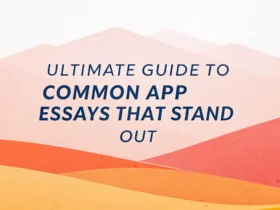
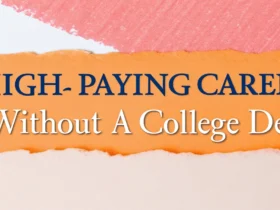

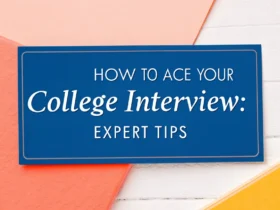

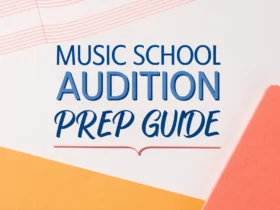



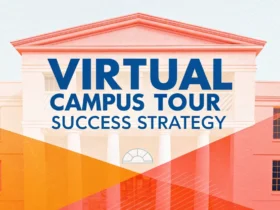


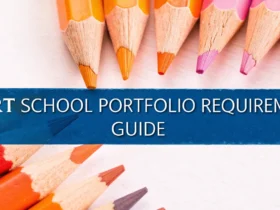
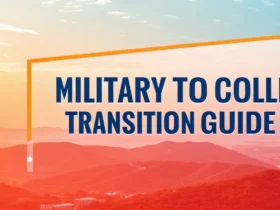
Leave a Reply
View Comments